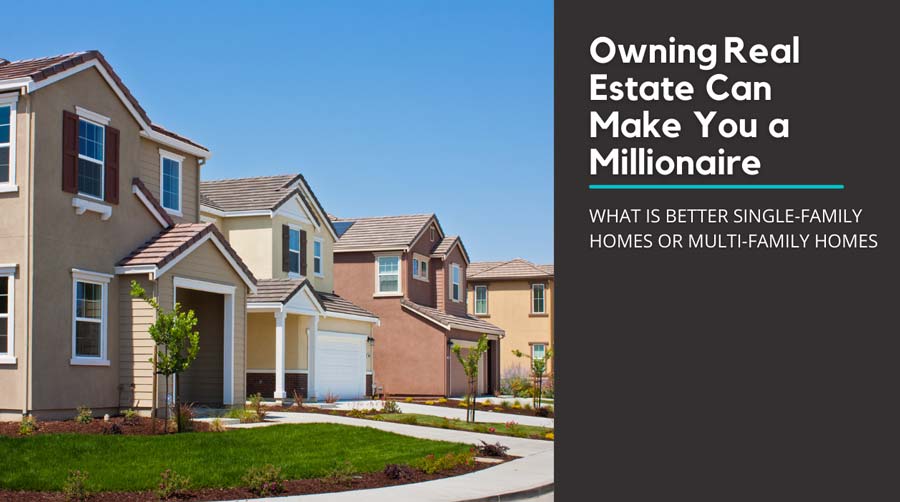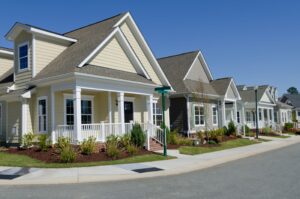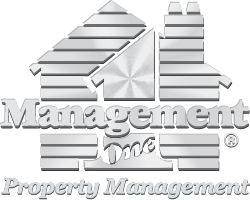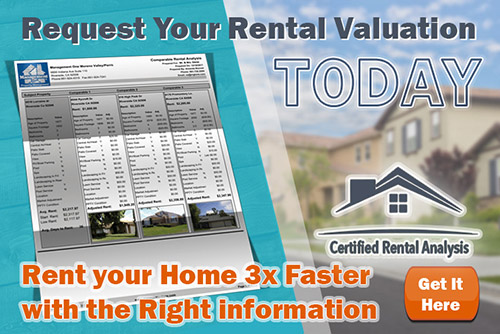
Single or Multifamily Rental Property: Which Investment Is Right for You?
“90% of all millionaires become so through owning real estate."
— Andrew Carnegie
Those are wise words and lofty goals, but how do individual investors start investing in real estate? For many, rental housing is the simplest route. But that begs the question: multifamily or single-family?
To best answer this question, one should consider the “whole” market, not just what situation best suits you as a landlord.
When the housing market and job markets crashed, we saw an emergence of multi-generational living come on the scene. According to FactTank, a whopping 64 million Americans now live in a multi-generational living situation. Add this to a housing market where homeownership as a whole is on the decline, you have nearly the perfect storm to prove that just possibly a single-family home is better than multi-family housing. It’s fair to say, that most larger families would prefer to live in a house over an apartment or condo, they enjoy having space to spread out.
Let’s take a closer look at single-family homes versus multi-family units.
Breaking down the basics
Disclaimer: The investment potential of any property will depend on the property location, market conditions, and projected return on investment.
1. Single-family homes are usually less expensive to buy than multifamily properties, so you can start investing with a small amount of capital and invest more often.
Most landlords become “landlords” by accident, usually because they inherited a home from a family member. Thus, breaking into the rental business is a bit easier and the starting point is already determined for them. And in today’s market, most of the time they know someone that is looking for a home to rent, and voila you have an instant tenant/landlord situation a hand.
2. Single-family home financing is typically easier to obtain, and interest rates are generally lower.
If you are not a “lucky” one to inherit your first investment property, more than likely you are looking at purchasing it for yourself. Typically, you can expect to pay nearly ¾ to a full percent more on a mortgage interest rate between single-family housing compared to multi-family housing.

3. Single-family homes tend to appreciate faster than multifamily housing.
The value of single-family homes increases according to the supply and demand for owner-occupied properties. Whereas multifamily properties are evaluated according to condition and the income they generate.
4. There are typically fewer use restrictions for single-family homes than for condo units.
Ever lived in an apartment or condo? Then you know the number of restrictions that come with that living situation. Living in a single-family home tends to be more appealing for families so they can let their kids run and play and not have to worry about “disturbing” the neighbors.

5. Multifamily units require more management and usually have more turnover and more expenses.
If you have to sell an investment suddenly due to a change in circumstances or family emergency, single-family homes are typically easier and quicker to sell — and your tax liability will be less. Plus, with a single-family home, you are losing a smaller percentage of your rental income than with, for example, a 10-unit apartment building: If you had to sell it, you would lose all your monthly income and have a huge tax liability on capital gains, whereas if you owned 10 single-family homes, you could sell one or two, which will sell faster, limit your capital gains, and still leave 80% of your monthly income intact. On the flip side if you have the ability to buy ten, 10 unit apartment buildings that work as well but we find most investors are not in the position financially.
6. Multifamily buildings often cost more to own because of membership fees and special assessments, which are likely to keep rising over time.
In some parts of the country, membership fees can run nearly as much as the mortgage payment. Making it nearly impossible to make a profit because, let’s face it, if you are going to pay that much in rent you might have well saved your money and buy a home.

7. Single-family home investing is less risky.
As with the stock market, you can make a great deal of money quickly in real estate by making risky, high-profit investments. But you can lose your money just as quickly. A slower and more stable investment strategy usually makes more sense for those who don’t have a lot of money to lose. By buying one or two single-family rental properties, you can gain experience (and equity) and gradually add more properties to your portfolio. Having just 2 properties free and clear at retirement paying you $2500 each in rent gives you $60,000 a year fewer property taxes, insurance, repairs, and management fees for a note of about $50,000 a year. In addition, if the property is worth $500,000 each you have 1 million in equity. Slow and steady wins the race.
Here at Management One we specialize in our Single-Family Home Retirement Strategy and believe, for the most part, that is the better investment for most landlords. At the end of the day, you have to make the decision that best fits your investment needs and goals. Check out this great book to help you further navigate the investment waters. HOLD: How to Find, Buy, and Rent Houses for Wealth. And when you are ready to get started, give us a call for your FREE Rental Analysis or to look deeper into our Single-Family Home Retirement Strategy concept.
Check out out this great webinar on building wealth through Real Estate Investing:










